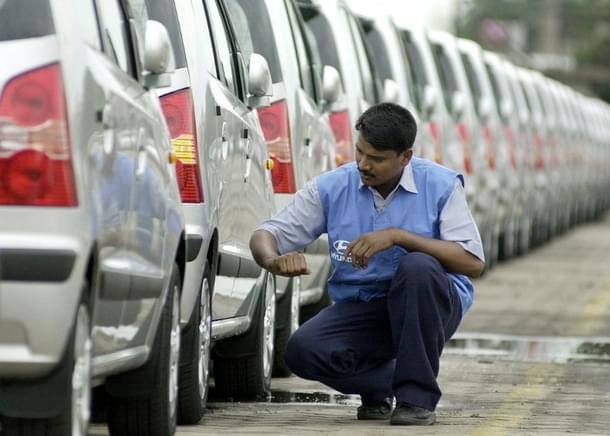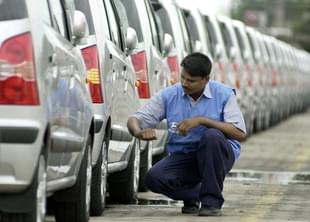Economy
Challenging Times For India’s Exports
Tina Edwin
Apr 19, 2015, 01:53 PM | Updated Feb 11, 2016, 09:10 AM IST
Save & read from anywhere!
Bookmark stories for easy access on any device or the Swarajya app.


India’s foreign trade appears to have plunged into a crisis. At least that’s what headline numbers suggest. Exports plunged 21% to $23.9 billion in March 2015, from a year ago, recording its steepest fall in nearly six years. Imports too contracted 13.4% during the month to $35.7 billion. The trade deficit widened to $11.8 billion, the highest in four months.
However, some of the alarm over the deterioration of foreign trade is a bit misplaced. The sharp drop in both exports and imports was largely due to a steep decline in international prices of crude and petroleum products on surplus supply. The weakness in the global economic environment and the recent appreciation of the rupee too played a spoiler for India’s exports.
Significantly, the value of oil imports plummeted 53% in March, from a year ago, to $7.4 billion. Likewise, value of petroleum products exports too plunged 59% to $2.4 billion. Oil imports account for almost a third of India’s import bill and a little under a fifth of India’s exports, and so any change in global prices of petroleum has a disproportionately higher impact on the country’s foreign trade. Non-oil imports actually grew 10.6% during the month. That is partly due to the near doubling of gold imports in March, despite softer prices in the international market. India imported gold worth $5 billion in March 2015, up from $2.6 billion in March 2014. This should be a cause for concern in future.
On the exports side, the fall in non-oil exports was limited to 12% for March 2015, against 21% when petroleum exports are included. Contraction was seen in trade of most of the principal items in the export basket. Gems and jewellery declined 8.4%, pharmaceuticals 2%, chemicals 5.4%, engineering goods 2.6% and electronics 20.3%.
On a cumulative basis, India’s trade did not do too badly in the full year despite the steep fall in crude and petroleum prices. Exports for the full year declined 1.2% to $310.5 billion while imports fell 0.6% to 447.6 billion. Trade deficit for the full year widened marginally to $137 billion from $135.8 billion in 2013-14.
In the current fiscal year, non-oil imports, particularly machinery and capital goods, could see a big pick up as economic growth gathers steam and the investment cycle recovers. If exports do not keep pace, the trade deficit could widen, putting pressure on the current account deficit. The government would also need to keep a close eye on imports of gold, if it wants to keep its trade balance under control.
Big challenges ahead
The five-year foreign trade policy announced earlier this month targets expanding India’s exports (both merchandise goods and services) to $900 billion by 2019-20. To get to that target, exports of goods and services will need to grow at compounded annual growth rate of 14% over the next five years. That is a very ambitious target when global trade is expected to grow at an extremely slow pace and India’s own performance has been lacklustre. The World Trade Organization estimates that world trade will expand 3.3% in 2015 and 4% in 2016.
The policy has rightly sought to incentivize exports of value added products. India needs to step up exports of high quality manufactured goods instead of exporting raw materials and intermediate inputs that are processed in the destination countries.
Another challenge before India is the emerging mega multilateral trade agreements being signed between major nations. India is not part of most of these agreements and that can potentially hurt the country’s exports as nations that are signatories to these agreements – mostly all of Europe, the Americas and developed Asia – would seek to trade amongst themselves. India would be able to penetrate these large and advanced markets only by offering high quality and competitively priced exports.
Exporters believe the two new schemes of the foreign trade policy – Merchandise Exports from India Scheme (MEIS) and Services Exports from India Scheme (SEIS) — together with revamping of incentive schemes, reduction of transaction costs, incentives to special economic zones and easier rules for doing business will boost exports.
But exporters also need to reconcile to living with lower subsidies and incentives as the Indian economy prospers. Once India’s per capita income tops $1,000, the government will need to phase out some of the subsidies it gives exporters. That day is not very far off.
Indian exporters have a world of opportunities ahead of them to explore and many challenges to surmount to become a major player in the world.
The writer is a Delhi-based journalist who tracks economy and data





